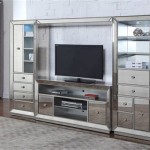How to Mirror Your iPhone to Vizio TV Without WiFi
Mirroring an iPhone screen to a Vizio TV can significantly enhance the viewing experience, whether it’s for sharing photos and videos, delivering presentations, or simply enjoying mobile games on a larger screen. While many screen mirroring methods rely on a WiFi network, situations often arise where a WiFi connection is unavailable or unreliable. This article will explore various techniques to mirror an iPhone to a Vizio TV without using WiFi, enabling users to maintain connectivity and achieve their desired screen mirroring functionality under a wider range of circumstances.
WiFi-free screen mirroring typically involves establishing a direct connection between the iPhone and the Vizio TV through physical cables or alternative wireless protocols that do not require a traditional WiFi network. These methods may require specific adapters, apps, or settings configurations, but they offer a practical solution when WiFi is not an option. It is important to understand the requirements and limitations of each method to choose the one that best suits the user’s needs and available resources.
Using an HDMI Adapter
One of the most reliable methods for mirroring an iPhone to a Vizio TV without WiFi is by using an HDMI adapter. This approach involves physically connecting the iPhone to the TV using a cable and an adapter that converts the iPhone's Lightning (or USB-C for newer models) port to an HDMI output. This creates a direct wired connection, bypassing the need for a wireless network. This method is particularly useful when network security is a concern or when streaming quality is paramount.
The specific adapter required will depend on the iPhone model. Older iPhones with a Lightning port require a Lightning Digital AV Adapter, while newer iPhone models with a USB-C port will need a USB-C to HDMI adapter. These adapters are widely available from various retailers and manufacturers. Ensure the adapter is compatible with the iPhone model to ensure proper functionality. Consider purchasing an adapter from a reputable brand to ensure reliability and performance.
To use an HDMI adapter, follow these steps:
- Connect the HDMI cable to the HDMI port on the Vizio TV. Note the HDMI input number (e.g., HDMI 1, HDMI 2).
- Plug the other end of the HDMI cable into the HDMI port on the adapter.
- Connect the Lightning or USB-C end of the adapter into the corresponding port on the iPhone.
- Turn on the Vizio TV and select the correct HDMI input corresponding to the port where the HDMI cable is connected. Usually, this can be done by pressing the 'Input' or 'Source' button on the TV remote until the correct HDMI input is selected.
- The iPhone screen should now be mirrored on the Vizio TV. If not, check the connections and ensure the adapter is securely plugged into both the iPhone and the HDMI cable.
Benefits of using an HDMI adapter include a stable, high-quality connection with minimal latency, making it suitable for streaming videos, playing games, or giving presentations. This method is also relatively simple to set up, requiring only the physical connection of the adapter and cable. The main disadvantage is the need for an adapter and cable, which may not always be readily available. Additionally, the wired connection may restrict movement and require the iPhone to remain close to the TV.
When using an HDMI adapter, it's essential to check the TV's resolution settings to ensure the mirrored image is displayed correctly. Some TVs may require manual adjustment of the display settings to optimize the image quality. Also, consider the length of the HDMI cable; a longer cable provides more flexibility but may be more prone to signal degradation if it is of poor quality. A high-quality, shorter cable is generally preferred for the best possible display quality.
Utilizing a Personal Hotspot
Although the primary focus is on mirroring without WiFi, a Personal Hotspot can provide a localized, self-created WiFi network that does not rely on an external WiFi router. This method effectively isolates the connection between the iPhone and the Vizio TV, allowing the TV to connect to the iPhone's hotspot using a feature like Chromecast built-in on the Vizio TV. This method can be useful if there is no external WiFi network available but the TV and iPhone are still able to communicate wirelessly. This method uses the iPhone's cellular data to create the hotspot, so data usage should be monitored if there is a limited data plan.
To set up a Personal Hotspot on the iPhone, follow these steps:
- Open the Settings app on the iPhone.
- Tap on "Personal Hotspot."
- Toggle the "Personal Hotspot" switch to the "On" position.
- Set a password for the hotspot.
Once the Personal Hotspot is active, the Vizio TV can connect to it like any other WiFi network. The following steps outline how to connect the TV to the hotspot:
- Turn on the Vizio TV and navigate to the settings menu.
- Find the "Network" or "WiFi" settings.
- Select the iPhone's Personal Hotspot from the list of available networks.
- Enter the password for the hotspot when prompted.
Once the Vizio TV is connected to the iPhone's Personal Hotspot, users can utilize screen mirroring features such as Chromecast built-in (if available on the Vizio TV) or apps that support casting over a local network without internet access. This method is a viable alternative when a standard WiFi network is unavailable, but it relies on the iPhone's cellular data connection.
Using a Personal Hotspot can drain the iPhone's battery more quickly than usual, so it is advisable to keep the iPhone plugged into a power source while using this method. Also, be mindful of data usage, especially when streaming video content, as this can consume a significant amount of cellular data. Consider enabling data-saving features on the iPhone and setting resolution limits on streaming apps to minimize data consumption.
This method's effectiveness depends on the strength of the iPhone's cellular signal. In areas with weak cellular coverage, the connection may be unstable or slow, affecting the quality of the mirrored image or streaming content. Despite this limitation, using a Personal Hotspot can provide a convenient wireless mirroring solution when a traditional WiFi network is not accessible.
Exploring Apps for Local Network Casting
Some third-party apps offer screen mirroring capabilities using a local network, even without an internet connection. These apps often leverage peer-to-peer WiFi Direct technology or similar protocols to establish a direct wireless connection between the iPhone and the Vizio TV. While the TV and iPhone still need to connect to the same local network, this network doesn't actually have to be connected to the internet; it can be a closed system.
One example of such an app is AirBeamTV, which offers mirroring capabilities for various TV brands, including Vizio. These apps typically require installation on both the iPhone and the Vizio TV (if the TV supports app installation). After installation, establish a direct connection between the devices, where the iPhone can then mirror its screen to the TV without relying on an external WiFi network. The usability of these apps will depend on the features of the Vizio TV, whether it allows app installation from third-party developers, and the compatibility with the specific app offered.
The setup process usually involves the following steps:
- Download and install the screen mirroring app on the iPhone from the App Store.
- If the Vizio TV supports app installation, download and install the corresponding receiver app on the TV. If the TV does not allow app installation, some apps might use other connection methods.
- Open the app on both devices and follow the on-screen instructions to establish a connection. This might involve scanning a QR code or entering a connection code.
- Once connected, the iPhone screen should be mirrored on the Vizio TV.
The app's specific configuration and settings may vary depending on the app used. It is essential to read the app's documentation or online resources for detailed instructions on how to use it effectively. Some apps may offer additional features such as screen rotation, resolution adjustments, and audio settings.
The success of this method depends on the compatibility of the app with both the iPhone and the Vizio TV. Some apps may not be compatible with all TV models or iOS versions. It is advisable to check the app's compatibility information before installation. Also, the performance of the screen mirroring connection may vary depending on the devices' hardware capabilities and the distance between them.
While these apps can provide a convenient solution for mirroring without WiFi, it is crucial to consider potential security risks associated with using third-party apps. Ensure the app is downloaded from a reputable source and review its privacy policy before granting any permissions. It is also advisable to keep the app updated to ensure the latest security patches are installed.
Exploring these alternative methods ensures that users can effectively mirror their iPhone to a Vizio TV even in the absence of a standard WiFi network. Each method has its own advantages and disadvantages, and the best option will depend on the specific needs, available resources, and technical expertise of the user.

How To Mirror Iphone Tv Without Wifi 3 Easy Methods Ps

Simple Ways To Mirror Iphone Tv Without Wifi 6 Steps

Simple Ways To Mirror Iphone Tv Without Wifi 6 Steps

How To Mirror Iphone Vizio Tv 3 Easy Methods

How To Mirror Iphone Tv Without Wi Fi

How To Connect Phone Tv Without Wi Fi Techwiser

How To Mirror Iphone Tv Without Wi Fi

Screen Mirror Iphone To Vizio Tv 3 Diffe Methods

How To Mirror Iphone Tv Without Wi Fi

How To Mirror Your Phone A Vizio Tv Without Wifi Certsimple Com








